Template for student recommendation letter
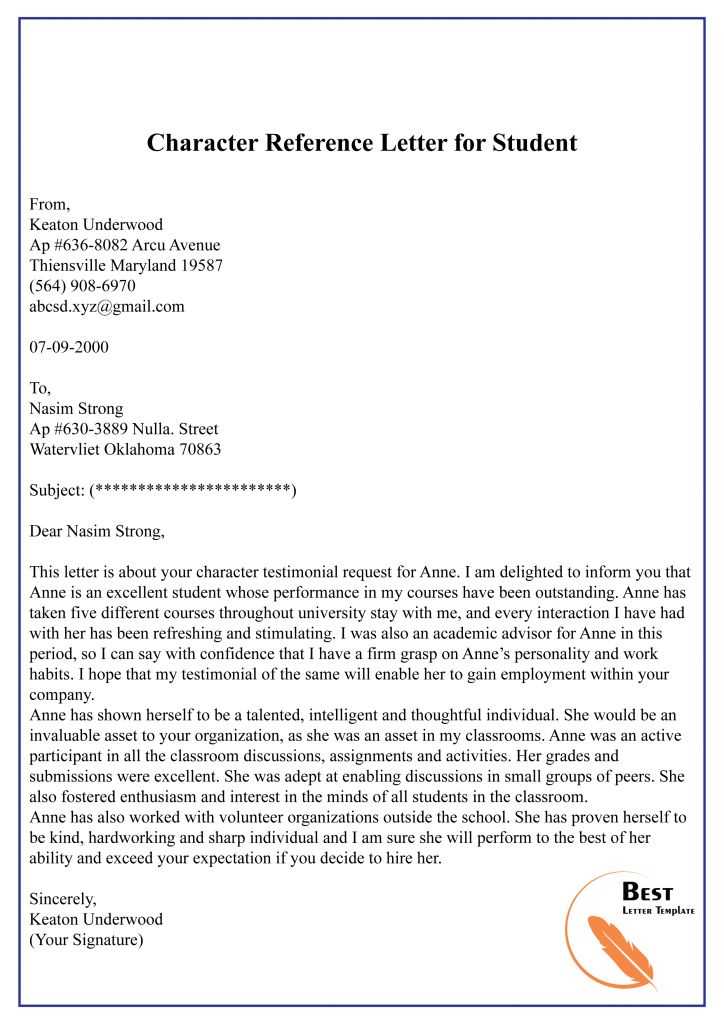
If you’re tasked with writing a student recommendation letter, focus on providing clear and specific examples that highlight the student’s strengths and achievements. Begin by describing the student’s academic abilities, work ethic, and attitude toward learning. It’s helpful to share specific projects or tasks the student has excelled in, showing their commitment and talent.
Next, mention the student’s personal qualities that make them stand out. Talk about their character, leadership skills, and how they contribute to the community. If possible, illustrate these traits through concrete examples from extracurricular activities, group projects, or volunteer work.
Lastly, conclude with a strong endorsement of the student’s future potential. Make it clear that you believe they will succeed in their academic or professional pursuits. Ensure that your recommendation is sincere and based on your genuine experiences with the student, as this will create a lasting and impactful impression.
Template for Student Recommendation Letter
I highly recommend [Student’s Name] for [specific program, scholarship, or position]. During their time in my [class or department], they demonstrated outstanding abilities and consistently excelled in both academic and personal pursuits. [Student’s Name] stands out not only for their work ethic but also for their ability to engage and contribute meaningfully to group discussions and projects.
Academic Achievements
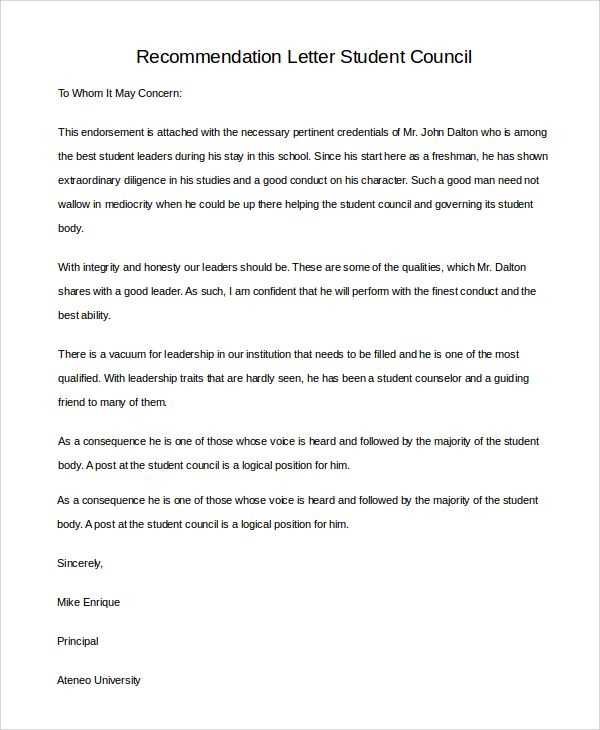
In [specific subject or project], [Student’s Name] displayed exceptional [skills/knowledge], impressing me with their grasp of complex concepts and ability to apply them in practical scenarios. Their analytical skills and attention to detail set them apart from their peers. In particular, [mention specific achievements or projects], where they [describe outcome or contributions], showcases their ability to thrive under pressure and deliver high-quality results.
Personal Qualities
Aside from their academic capabilities, [Student’s Name] is a natural leader. They are always willing to assist classmates and take initiative during group activities. Their empathy and strong communication skills make them well-liked among peers and respected by faculty. I’ve witnessed firsthand their ability to balance academic responsibilities with extracurricular commitments, proving their time management skills and dedication.
Based on my experience with [Student’s Name], I am confident that they will continue to excel in any challenging environment they pursue. I wholeheartedly recommend them for [specific program, scholarship, or position], and I believe they will be a valuable asset wherever they go.
How to Begin a Student Recommendation Letter
Begin with a clear statement of your relationship to the student. Identify your position, how long you’ve known the student, and in what context. This creates a foundation for the reader to understand the context of your assessment.
Start with the Basics
For example, you can write: “I have had the pleasure of teaching Jane Doe for two years in my chemistry class, where she consistently demonstrated dedication and intellectual curiosity.” This establishes your credibility as a recommender and sets the stage for specific examples of the student’s abilities.
Highlight Key Qualities Early
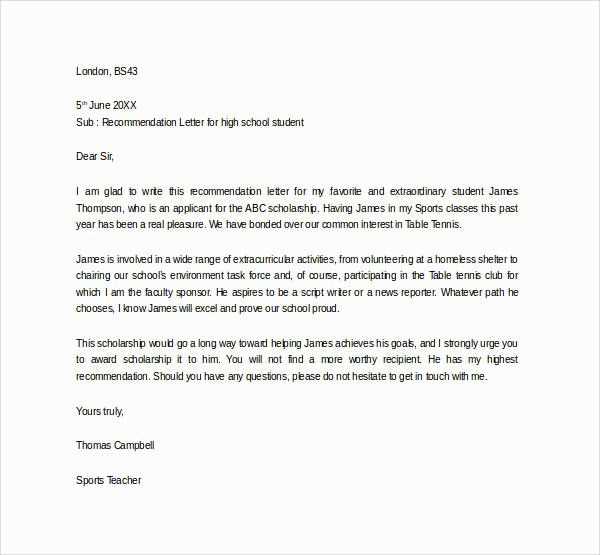
After the introduction, mention key attributes that define the student. These should directly relate to the purpose of the recommendation, whether it’s for a scholarship, university application, or a job. Be specific and avoid general terms like “smart” or “hardworking.” Instead, describe how the student applies these traits. For instance, you might say, “Her analytical skills are reflected in her ability to solve complex problems independently, often ahead of schedule.” This shows the reader why the student is exceptional.
By starting with concrete details, you not only capture the reader’s attention but also frame the student in the best light from the outset.
Key Information to Include About the Student
Start by highlighting the student’s academic performance in key subjects relevant to the position or program they are applying for. Include grades, test scores, or any specific accomplishments that demonstrate their proficiency in these areas.
Personal Strengths
Provide a clear description of the student’s personal qualities that make them stand out. Focus on attributes like work ethic, leadership, teamwork, or problem-solving skills. Use specific examples to illustrate how these qualities have been demonstrated in real-life situations, such as projects or group activities.
Contributions and Impact
Describe any contributions the student has made to school or community activities. Mention their involvement in clubs, volunteer work, or other extracurricular activities. Highlight how their participation has had a positive impact, whether by leading initiatives or supporting others.
Be sure to include details that are specific to the context of the recommendation, such as the student’s growth over time or their potential for future success. This helps build a complete picture of the student as both an individual and a student.
Describing the Student’s Strengths and Skills
John has a remarkable ability to approach tasks with clear focus and determination. His analytical thinking allows him to break down complex problems into manageable components and tackle them efficiently. Whether working independently or in groups, he consistently demonstrates leadership and initiative in all assignments.
Problem-Solving and Critical Thinking
John stands out for his ability to solve problems creatively. He consistently applies logical reasoning and uses a methodical approach to find solutions. For example, in his final project, he identified key inefficiencies in the process and proposed practical adjustments that improved overall performance. His critical thinking skills are sharp, which enables him to make well-informed decisions under pressure.
Collaboration and Communication
John excels in teamwork and collaboration. He communicates his ideas clearly and listens attentively to others, making him a valuable team member. He knows how to encourage his peers to contribute their ideas and fosters an environment where everyone feels heard. His ability to explain complex concepts in simple terms ensures that group members stay on the same page, leading to more productive collaborations.
Technical and Organizational Skills
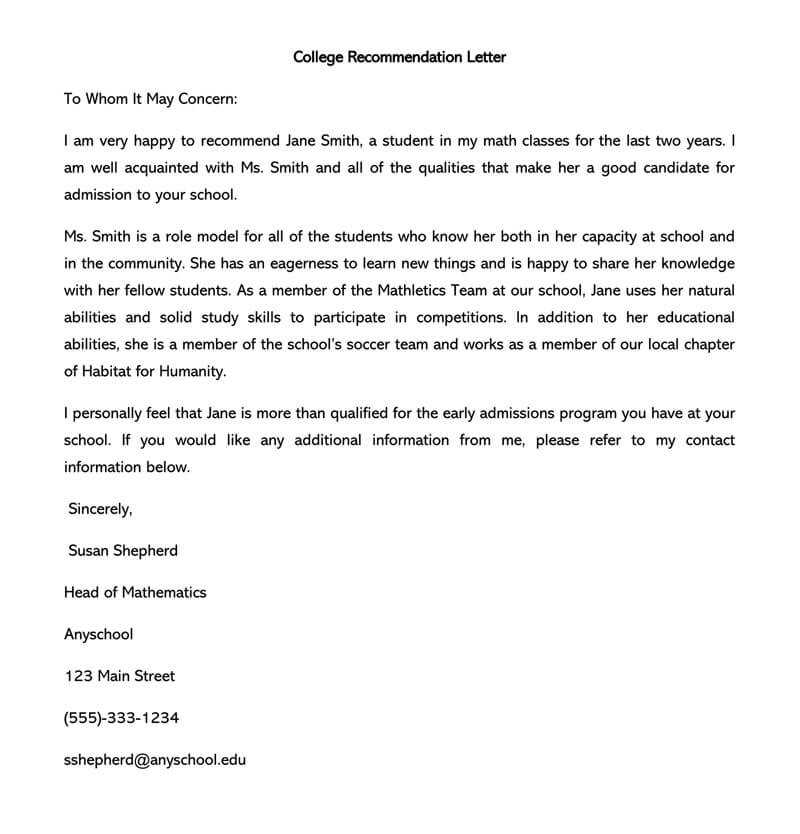
John has a strong grasp of both technical and organizational skills. He is proficient in various software tools, which he uses to streamline processes and enhance productivity. His organizational skills ensure that tasks are completed on time and with precision. He frequently takes the lead in managing schedules and coordinating team efforts to meet deadlines efficiently.
Work Ethic and Dedication
John’s work ethic is outstanding. He approaches each task with a level of dedication that surpasses expectations. He is punctual, reliable, and committed to delivering high-quality work. His ability to maintain focus, even in challenging circumstances, has earned him respect among his peers and instructors alike.
Additional Skills
- Strong written and verbal communication skills
- Proven ability to learn new concepts quickly
- Self-motivated and goal-oriented
- Adaptable to different environments and challenges
Providing Specific Examples of Academic Achievements
Use concrete examples to showcase the student’s academic capabilities. Mention specific projects or assignments where the student excelled, providing context and measurable outcomes. For example, if the student wrote a research paper, specify the topic, how it stood out, and the grade or recognition received.
Highlight moments where the student demonstrated critical thinking and problem-solving skills. If the student excelled in solving complex problems during group projects or in individual assignments, describe these instances with details. This not only reinforces their academic competence but also shows their ability to apply knowledge effectively.
When discussing exams or coursework, include details about exceptional performance. Instead of saying “the student did well,” mention the exact grade or score, along with the difficulty of the task. For example, “Scored in the top 5% of the class on the calculus final exam, which included advanced concepts such as multivariable integrals and differential equations.”
Include any honors, awards, or recognitions received by the student. For example, “Was awarded the Best Research Presentation at the regional science fair for their work on sustainable energy solutions.” Such recognitions serve as a clear indicator of the student’s dedication and hard work.
If the student demonstrated leadership in academic settings, mention it. For instance, “Led a team of five in a biology lab project, coordinating the research and presenting findings to faculty members, which received high praise for its thorough analysis and clarity.”
| Example | Description | Outcome |
|---|---|---|
| Research Paper on AI Ethics | Explored the implications of artificial intelligence in decision-making processes, showcasing deep understanding of the topic | Received an A+ grade and was selected for presentation at the academic conference |
| Math Competition | Participated in a national math competition, solving complex problems in a timed setting | Placed in the top 10 out of 300 participants |
| Science Fair Project | Designed an innovative prototype for water purification using solar energy | Won first place in the state science fair and was featured in local news |
Offering Insight Into the Student’s Personal Qualities
John’s approach to teamwork stands out. He consistently demonstrates a willingness to listen and collaborate with peers, often taking the initiative to mediate between differing opinions. Whether working on group assignments or school projects, his ability to maintain focus and respect differing viewpoints contributes significantly to the success of any team effort. His calm demeanor in challenging situations makes him a natural leader without needing to assert authority.
Adaptability and Problem-Solving
John’s adaptability shines through during times of change. He approaches new challenges with a clear, methodical mindset and readily adjusts to unforeseen circumstances. I’ve witnessed his quick thinking on multiple occasions, especially when faced with tight deadlines or complex problems. Instead of being overwhelmed, he breaks down issues logically, coming up with practical solutions that others can easily follow.
Work Ethic and Responsibility
John consistently displays a strong sense of responsibility, never shying away from tasks that others might avoid. He always meets deadlines and ensures that the quality of his work exceeds expectations. His punctuality and attention to detail are consistently impressive, and his reliability makes him someone his peers and teachers can count on. His determination and willingness to go above and beyond speak volumes about his commitment to excellence.
How to Close the Letter and Offer Your Endorsement
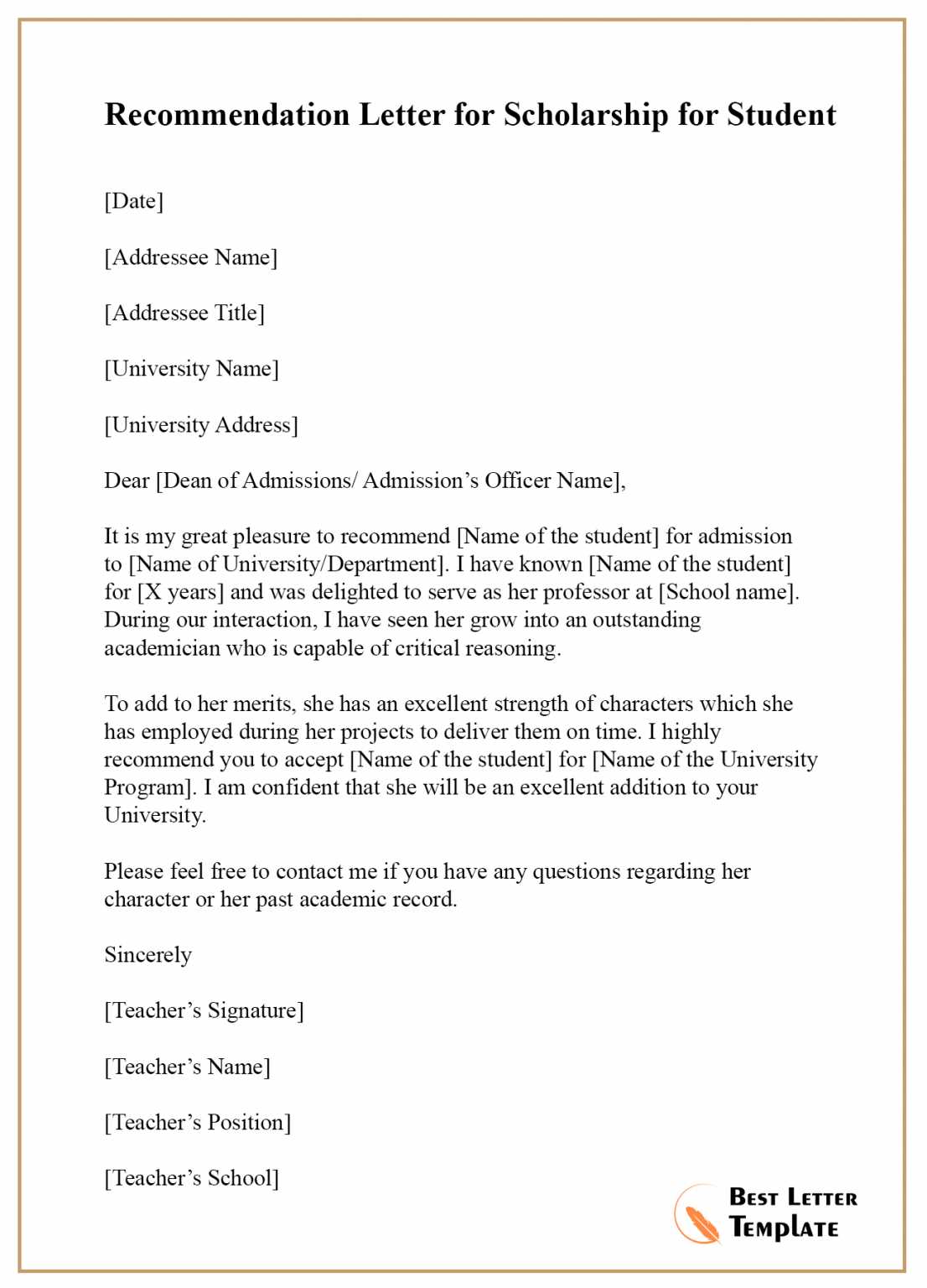
End the letter with a clear and confident recommendation. Highlight the specific reasons the student is well-suited for the opportunity. Avoid vague statements and focus on the student’s unique strengths that align with the requirements of the position or program.
- Provide a direct endorsement: “I strongly recommend [Student’s Name] for this position.” This leaves no ambiguity about your stance.
- Reaffirm their suitability: “Their ability to [mention a key skill] makes them an excellent candidate.” Tailor this to the specific role or field.
- Express confidence in their future success: “I have no doubt they will excel in [specific area or environment].” This helps convey trust in their potential.
Wrap up the letter by offering to provide further details if needed. Show your willingness to support their application further, which strengthens your endorsement.
- Offer availability: “Please feel free to contact me at [email/phone] if you need any additional information.”
- End on a note of positivity: “I am confident that [Student’s Name] will be an asset to your program.” This reinforces the recommendation one final time.
Finish with a polite and professional closing, such as: “Sincerely,” followed by your name and title.